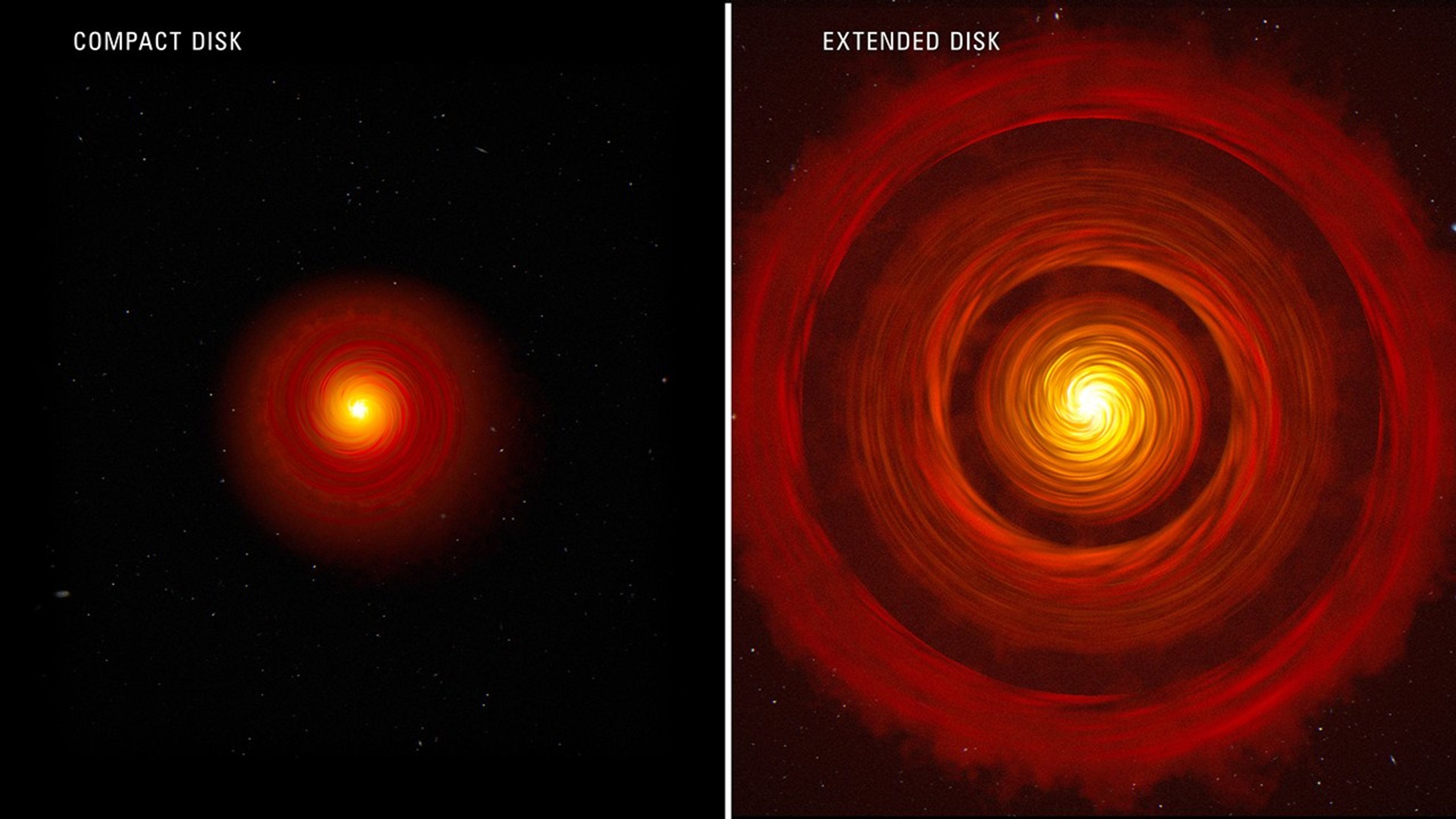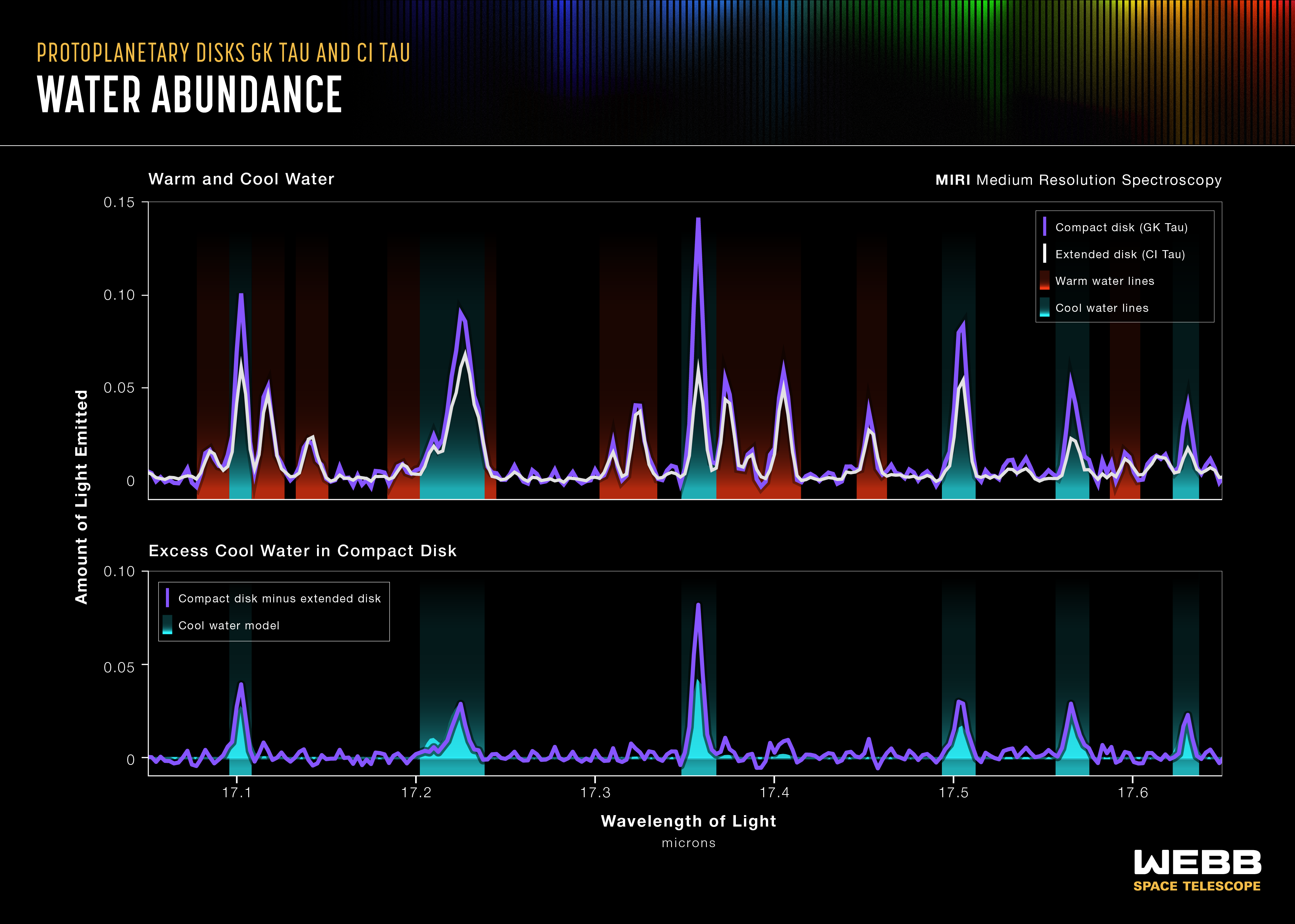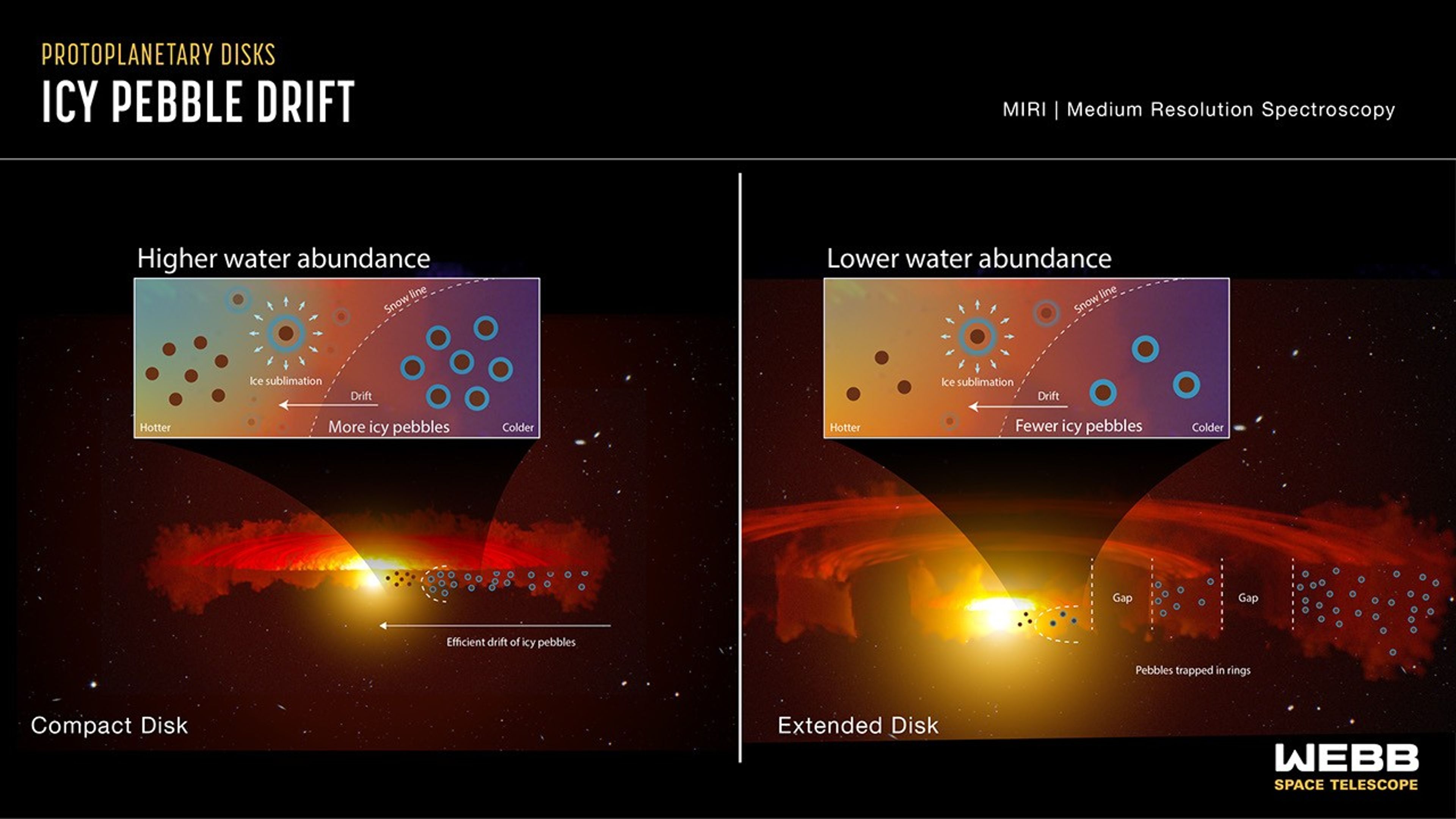1 min read
Two Protoplanetary Disks (Artist Concept)

This artist's concept compares two types of typical, planet-forming disks around newborn, Sun-like stars. On the left is a compact disk, and on the right is an extended disk with gaps. Scientists using Webb recently studied four protoplanetary disks — two compact and two extended. The researchers designed their observations to test whether compact planet-forming disks have more water in their inner regions than extended planet-forming disks with gaps. This would happen if ice-covered pebbles in the compact disks drift more efficiently into the close-in regions nearer to the star and deliver large amounts of solids and water to the just-forming, rocky, inner planets.
Current research proposes that large planets may cause rings of increased pressure, where pebbles tend to collect. As the pebbles drift, any time they encounter an increase in pressure, they tend to collect there. These pressure traps don't necessarily shut down pebble drift, but they do impede it. This is what appears to be happening in the large disks with rings and gaps. This also could have been a role of Jupiter in our solar system — inhibiting pebbles and water delivery to our small, inner, and relatively water-poor rocky planets.
- Release DateNovember 8, 2023
- Science ReleaseNASA’s Webb Findings Support Long-Proposed Process of Planet Formation
- CreditIllustration: NASA, ESA, CSA, Joseph Olmsted (STScI)
Related Images & Videos

Water Abundance (MIRI Emission Spectrum)
This graphic compares the spectral data for warm and cool water in the GK Tau disk, which is a compact disk without rings, and extended CI Tau disk, which has at least three rings on different orbits. The science team employed the unprecedented resolving power of MIRI ’s MRS...

Pebble Drift Infographic
This graphic is an interpretation of data from Webb’s MIRI , the Mid-Infrared Instrument, which is sensitive to water vapor in disks. It shows the difference between pebble drift and water content in a compact disk versus an extended disk with rings and gaps. In the compact disk...
Share
Details
Laura Betz
NASA’s Goddard Space Flight Center
Greenbelt, Maryland
laura.e.betz@nasa.gov
NASA, ESA, CSA, Joseph Olmsted (STScI)































